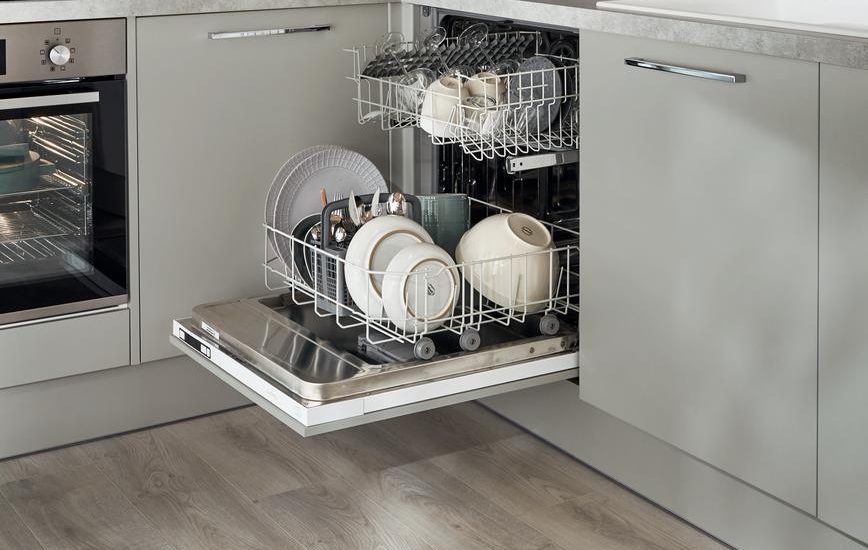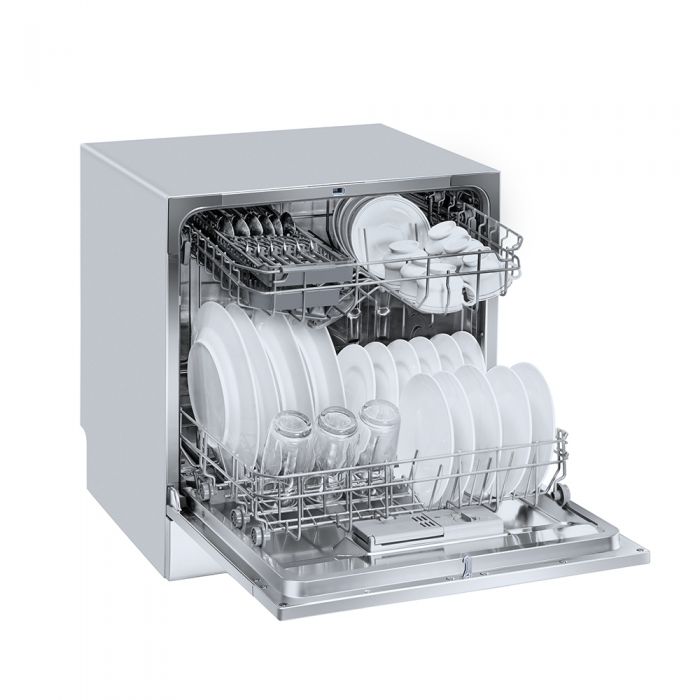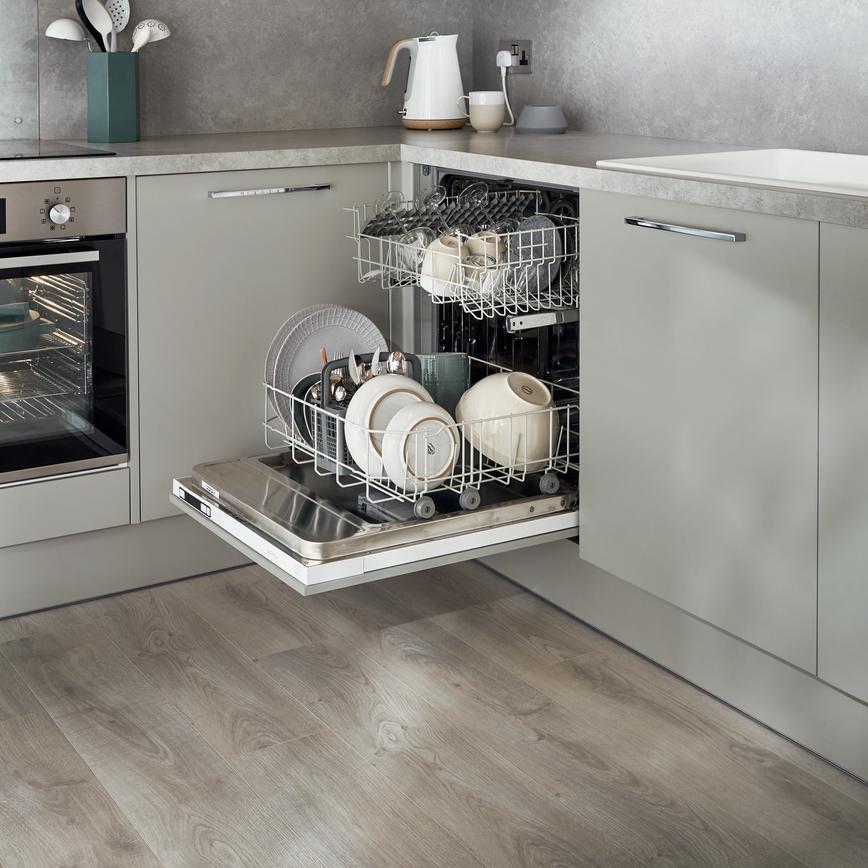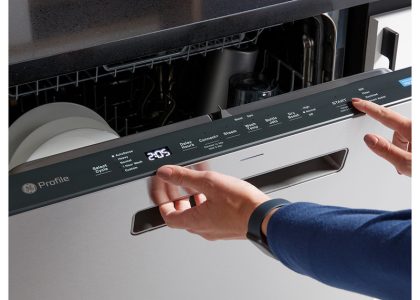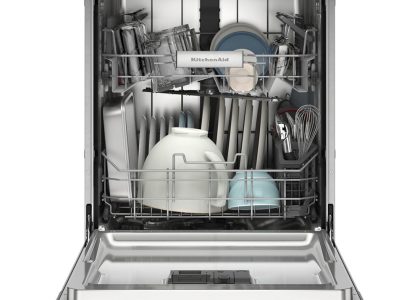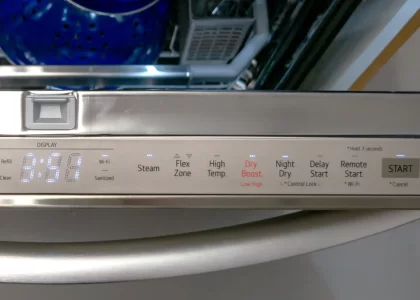Understanding Dishwasher Sizes
Before you dive into the process of how to measure for a dishwasher, it’s crucial to familiarize yourself with dishwasher sizes. Dishwashers generally come in standard sizes, but small variations could impact the fit and function in your kitchen. Knowing the common dimensions will help you understand what to look for when it comes time to measure.
The most frequently encountered dishwasher size fits under the counter and is approximately 24 inches wide, 35 inches high, and 24 inches deep. This standard size is what most kitchen cabinetry is designed to accommodate. However, for smaller kitchens or less conventional spaces, compact dishwashers are also available. These are typically around 18 inches wide and may have a slightly reduced height or depth.
Additionally, portable dishwashers offer flexibility since they aren’t fixed to a specific location, and drawer dishwashers, which provide a unique and ergonomic design, offer another dimension option. All these variants underscore the need to measure your kitchen space meticulously to ensure a smooth installation. By understanding these different sizes, you can better gauge which type will suit your home’s needs and what measurements you’ll need to take.
Standard Dishwasher Dimensions
When choosing a dishwasher, it’s vital to know the standard dimensions. This ensures the machine fits well in your kitchen layout. Standard dishwashers typically have a width of 24 inches. They stand about 35 inches tall and have a depth of 24 inches. These measurements are key for under-the-counter models. Most home kitchen designs can accommodate these sizes seamlessly.
For precision, double-check these numbers when shopping. Remember, these are the general dimensions. Some models might vary slightly in size. A few inches can make a big difference during installation. Always factor in some space for connections and ventilation. This prevents issues after purchase.
In summary, standard dishwashers have a width of 24 inches, a height of 35 inches, and a depth of 24 inches. Keeping these dimensions in mind is critical when you learn how to measure for a dishwasher. This ensures you pick a size that will fit as expected, avoiding any modifications to your kitchen space.
Measuring Your Kitchen Space
When planning to install a new dishwasher, accurately measuring your kitchen space is essential. It’s a straightforward task. Yet, it prevents future headaches by ensuring your new appliance fits perfectly. Here are steps to guide you through the process.
Start by grabbing a tape measure. You’ll need to check the width, height, and depth of the space where you’ll place the dishwasher. As mentioned earlier, standard units typically need an opening of 24 inches wide, 35 inches high, and 24 inches deep. Measure each dimension twice to avoid any errors. Write down your measurements clearly. Be sure to note any obstructions that might affect the installation.
Next, look for any adjacent cabinetry or appliances. These can impact how the dishwasher door opens or how it aligns with the rest of your setup. Don’t forget to leave a little extra space for the dishwasher’s door to open and close without hitting other objects.
Also, take into account the location of the plumbing and electrical connections. You need enough room behind the dishwasher for hookups. Consider these utilities when you measure depth especially. Remember to leave space for water hoses and electrical wiring.
Check the floor level too. Uneven floors can cause problems during installation. Use a level to see if any adjustments are needed before placing your dishwasher.
By following these simple steps while learning how to measure for a dishwasher, you’ll make your purchase and installation process much smoother. Taking the time to measure correctly will save you from potential issues and ensure your dishwasher fits just right in its new home.
Dishwasher Types and Size Considerations
When picking the perfect dishwasher, consider the different types available and how they fit into your kitchen. The four main dishwasher types to focus on are:
- Built-In Undercounter Dishwashers: These are the most common and are designed to fit seamlessly below your kitchen counter. They generally measure 24 inches in width, but always check for slight variation.
- Compact Dishwashers: Ideal for small kitchens or apartments, compact dishwashers are about 18 inches wide. They save space without sacrificing too much on capacity.
- Portable Dishwashers: Portable units are flexible because you can move them around. They’re great if you cannot install a built-in model. Size varies, so measure your space carefully.
- Drawer Dishwashers: Drawer dishwashers come in single or double-drawer configurations. They offer convenience and are a good fit for small or ergonomically challenged spaces.
After picking a dishwasher type, double-check the specific size for your chosen model. Even a few inches can impact how to measure for a dishwasher. Remember, it’s not just about width, height, and depth; consider door swing space, proximity to other appliances, and ease of use. Take note of the dishwasher’s location in relation to water and power supplies. This helps prevent future installation difficulties.
Choose wisely to ensure your new dishwasher complements your kitchen’s layout and satisfies your household’s needs. Knowing these considerations aids in making an informed decision and a smooth installation process.
Tools Needed for Measuring a Dishwasher
To measure your kitchen space for a dishwasher, a few basic tools are necessary. First, grab a tape measure. It’s the most important tool for accurate measurements. Ensure it’s long enough to span the full height and depth of the installation area. A notebook and pencil are also essential. Use them to record measurements and any notes about the space. A level is vital for checking the evenness of the floor. An uneven floor can cause issues with installation and operation. You might also need a flashlight to see into dark corners, behind cabinets, or under counters. A screwdriver can come in handy if you need to remove toe-kicks or paneling to check the available space. Lastly, have a stepladder available for reaching height measurements or checking cabinetry alignment.
With these tools at hand, you stand ready to measure the space for your new dishwasher correctly. This ensures a good fit and easy installation. Prepare your toolkit ahead of time to make the process smooth and efficient.
Steps to Measure for a New Dishwasher
When readying to measure for a new dishwasher, follow these critical steps to ensure accuracy and a smooth installation process:
- Clear the Space: Start by emptying the area where you will install the new dishwasher. Remove any items that could hinder your measurement accuracy.
- Measure Width: Use your tape measure to find the width of the opening. Start from wall to wall at the spot where the dishwasher will go. Make sure the tape is straight and level.
- Measure Height: Measure from the floor to the underside of the countertop. Ensure the tape measure is straight up and down. Repeat this step to double-check your measurement.
- Measure Depth: Extend your tape measure from the back of the opening to the front edge. Make sure to account for any extra space needed at the back for hoses and connections.
- Account for Clearance: Note the space needed for the dishwasher door to open. Check that it won’t hit other appliances or cabinets when it swings out.
- Check for Obstructions: Look for anything that could block the dishwasher, such as pipes or wires. If you find any, you might need to adjust their position.
- Write Everything Down: Record all these measurements in a notebook. It’s essential to have a written record to refer to when selecting your dishwasher.
By carefully following these steps, you’ll eliminate the risk of buying a dishwasher that doesn’t fit your space. Take your time to measure twice and buy once, avoiding any costly errors in your dishwasher installation.
Adjusting Kitchen Space for Dishwasher Installation
When installing a new dishwasher, adjusting your kitchen space may be necessary. This ensures the dishwasher fits well and functions properly. Here’s what to consider during this part of the process:
- Cabinetry Alterations: If your measurements show the space is too small, you might need to modify the cabinetry. This could mean resizing drawers or cutting out a portion of the cabinet. Always handle with care to keep the rest of your cabinetry intact.
- Plumbing Adjustments: Ensure the plumbing under your sink can connect to the new dishwasher. You may need to move pipes or install new ones for proper alignment.
- Electrical Considerations: A suitable power outlet should be near the dishwasher. If not, you may have to install a new outlet or reroute electrical wiring to reach the dishwasher’s location.
- Floor Leveling: Check the floor where the dishwasher will sit. Use a level to see if it’s even. If it’s not, you can adjust the dishwasher’s feet or use shims to level it.
- Ventilation Space: Leave some space around the dishwasher for air circulation. Good ventilation is vital for the appliance to function efficiently.
- Door Clearance: Make sure there is enough room for the dishwasher door to open fully. It shouldn’t hit other appliances or cabinets when operating.
By considering these adjustments, you can prepare your kitchen space for a new dishwasher. Measure carefully, plan for any changes, and you’ll be ready for a successful installation.
Tips for Choosing the Right Dishwasher Size
Choosing the right dishwasher size is essential for a perfect kitchen fit. Here are some tips:
- Measure Before Shopping: Before you even start looking at models, know your kitchen’s exact measurements. It saves time and guides you to the best fit.
- Match Dishwasher to Usage: Think about how often you’ll use the dishwasher. Large families or frequent hosts may need a standard 24-inch model. Singles or couples could opt for a compact size.
- Consider Future Changes: If you might remodel your kitchen soon, consider how your dishwasher choice will fit into new plans.
- Check the Specs: Always read the product specifications. This way, you ensure the dishwasher you choose will fit your measured space.
- Leave Space Around: Ensure you have extra room for installation and airflow. Tight fits can cause overheating and make maintenance tough.
- Consult with Experts or Retailers: If unsure, talk to professionals. They can offer advice based on their experience with different kitchen layouts.
- Factor in Door Swing: Account for how much space you’ll need when the dishwasher door is open. This helps avoid blocking kitchen traffic or doorways.
By following these tips while learning how to measure for a dishwasher, you’ll confidently pick a size that aligns perfectly with your kitchen’s spatial constraints. Proper consideration ensures a seamless installation and integrates smoothly with your day-to-day kitchen activities.

